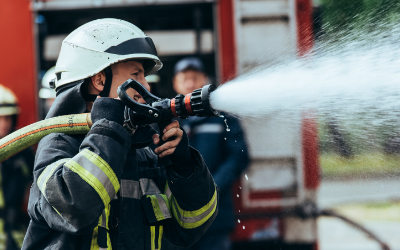
Do you have a fire evacuation plan? Does your plan include your pets? July 15th is Pet Fire Safety Day so make sure you have a plan for your pets, as well as your family and make your home “fire safe” for everyone.
Make your plan
Be sure to include your pet in your family’s evacuation plan. Including them in your plan will reduce their risk of burn injury, smoke inhalation, or death in case a fire ever breaks out in your home. Teach all family members the safest and fastest escape route and have a back-up plan in case the original path is blocked. Practice your escape route twice a year (at day and night) and be sure to practice with your pets!
Be sure your pet is microchipped. During the chaos of a fire, your pet may escape in a “fight or flight” response. If your pet is microchipped it will be easier to be reunited with him (be sure to update the contact information associated with the microchip).
Place stickers or decals on windows or doors alerting first responders that pets reside in your home. Be sure to indicate the number and type of pets on the decal. Stickers and decals are available from many retail outlets and the SPCA; contact your local branch for more information.
Fire (if it ever happens)
Keep a leash close to your pet’s bed to help guide your pet out.
Never go back inside a burning building to retrieve a family member or pet. Get out and stay out. Call the fire department as soon as you get outside.
If you’re unable to exit your home with your pets, inform the first responders as soon as they arrive.
After the fire
If your pet is having difficulty breathing, be sure to let the first responders know. Many rescue vehicles are equipped with special oxygen masks specifically designed for dogs and cats. Be sure to follow up with your veterinarian—if your pet smells like smoke, he likely inhaled some too. And burns are sometimes not apparent under the thick hair coat.
Prevention is key
As always, an ounce of prevention is worth a pound of cure. Cats and dogs can topple a burning candle with a flick of their tail. Keep open flames out of reach and never leave burning candles unattended—even for just a few minutes.
In colder months, or chilly summer days, monitor your pet around your fireplace. Most pets will stay a safe distance from fires, but some curious pets may get too close to the protective glass burning their nose, or may sleep too close to the fire and singe their fur. Toys or other flammable items can be accidentally pushed too close to a fire which could quickly ignite.
Make sure all your smoke detectors are in working condition and replace batteries every 6 months.
Spend some time this week developing a fire safety for all your family members, furry ones included!